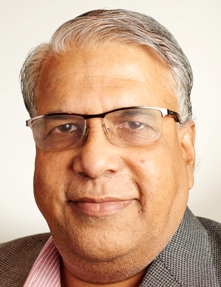V. Gopalakrishnan, regional director MEA of Matica Technologies, outlines why payment cards are ?here to stay?
There is a trend to compare the use of debit and credit cards in relation to the newcomer: ?mobile payment? ? or mobile money, as though cards are likely to go out of fashion.
And while Middle East consumers are known for their mobile payments, this simply isn?t true. So without rejecting out of hand the future potential of mobile payments, let?s examine some clear-cut facts about cards so no-one is in any doubt: cards are here to stay.
Between 2015 and 2017 it is estimated that 50bn cards will be produced for the global financial industry ? this includes 22bn EMV cards, the standard for smart payment cards, often referred to as ?chip and pin cards?. (EMV stands for Europay?, MasterCard? and Visa?.) In 2015, the EMV global market grew by about 30 per cent alone.
More generally, the Middle East and Africa is the third largest growth region in the world with an expected production of 2.75bn financial cards in 2016 ? which equates to 9.2 per cent growth. Asia Pacific tops the rate with over 10bn this year (11.3 per cent) followed by the Americas with 2.7bn (7.4 per cent).
The global contactless smart card market is also experiencing substantial growth as more point of sale technology is updated to accommodate the fastest form of card payment. Industry forecasts a global growth of 30 per cent over the next five years. Some 900mn contactless cards were issued in 2014.
 In the Middle East, where online shopping is especially popular despite 40 per cent being concerned about its security, (72 per cent of the region?s consumers made their first online purchase between 2013-2015), 53 per cent prefer in-store shopping so they can ?see, touch and try? products*. However, even in our region where many still use cash, card payments are undoubtedly still growing.
In the Middle East, where online shopping is especially popular despite 40 per cent being concerned about its security, (72 per cent of the region?s consumers made their first online purchase between 2013-2015), 53 per cent prefer in-store shopping so they can ?see, touch and try? products*. However, even in our region where many still use cash, card payments are undoubtedly still growing.
Three years ago, a Visa Middle East study** reported that between 2008-2012, increasing use of credit and debit cards added US$4.2bn to the GDP of the UAE, US$4.7bn to the GDP of Saudi Arabia, US$1.2bn to the GDP of Kuwait and US$0.4bn to Qatar?s GDP. The report concluded that the ?positive impact in economic growth is a direct result of card usage?.
Mark Zandi, chief economist of Moody?s Analytics, which conducted the report, said, ?The increase in consumption parallels the growing popularity and accessibility of electronic payments among global consumers?these findings point to the need for governments to adopt policies that encourage the shift to efficient and secure electronic forms of payments.?
So we can safely say that change is afoot. The demand for improved security remains omnipresent since fraudulent activity never abates. And for banks, other pressing issues include: how to win and retain customers in an increasingly competitive marketplace and how to increase the percentage of activated debit and credit cards because a huge proportion remain unactivated, representing a significant loss in revenue. In the USA, for instance, only 58 per cent of all activated credit cards are ever used and that?s less again because only 53 per cent of all issued cards are activated.
Worldwide, there is a distinct move towards decentralising the production and distribution of cards and bringing it into the bank branch. As such, ?financial instant issuance (FII)? ? placing a debit or credit card direct into the customer?s hands and activating it before they leave the branch or pop-up location ? is fast becoming the market?s hero.
With the help of international manufacturers like Matica, banks can invest in FII technologies that save on courier costs and mitigate the risk of customers not activating the card. Banks can also take these mobile desktop printers to other locations such as airports or shopping malls, opening opportunities for further revenue streams.
In our time-efficient 21st century, customers want a fast, convenient, but friendly service without fiddly activation processes, so receiving credit and debit cards in branch and purchase ready is the perfect solution. They leave the bank with galvanised loyalty ready to spend while the bank vastly improves its reputation and its chance to broaden profit margins without, one might say, ?breaking the bank? ? which is always a winner in our experience.
*According to Go-Gulf.
** The study was conducted for Visa by Moody?s Analytics, a leading independent provider of economic forecasting.
V. Gopalakrishnan is regional director MEA at Matica Technologies and has overseen significant financial projects with respected banks and financial institutions across the Middle East and Africa.






